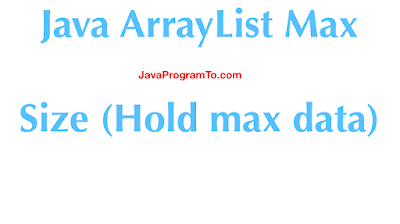1. Overview
In this tutorial, We'll learn how to sort arrays or lists using an anonymous comparator in java.
A complete guide on how to use comparator in java?
Anonymous class means creating the class and providing the implementation at the same without a class name.
For example, we have an interface Job and it has the method post() to post the new job. here, a new job1 instance is created for the implementation class of Job interface without a class name.
Example 1
interface Job {
void post();
}
Job job1 = new Job() {
@Override
public void post() {
System.out.println("Posting job 1 now");
}
This is similar to the anonymous implementation of the abstract class or interface. This is the actual implementation of the Comparator without creating a class and implementing the Comparator interface.








![Java Insert Dimensions To Complete Referencetype [Fixed] Java Insert Dimensions To Complete Referencetype [Fixed]](https://blogger.googleusercontent.com/img/a/AVvXsEi4G2by9JuxmRIQis7st5PGCNkR58JgE92J3-YtkewqmcyhzwXXfePxkg1ldJqwrxgfZyruN1QY-zJIn5SpeplmFC5tOhXE7vrm0EdSPktIt9Ry2uJXNskFUK-EXZkYHEoHrfga3P9ZFLvU4-5MXSLbxkEd8H8_iGAQxMmwCg5GaDJVDUg56MJb2xKA=w400-h255)







